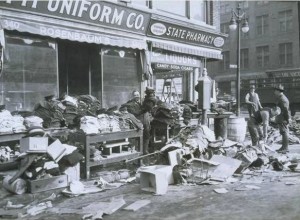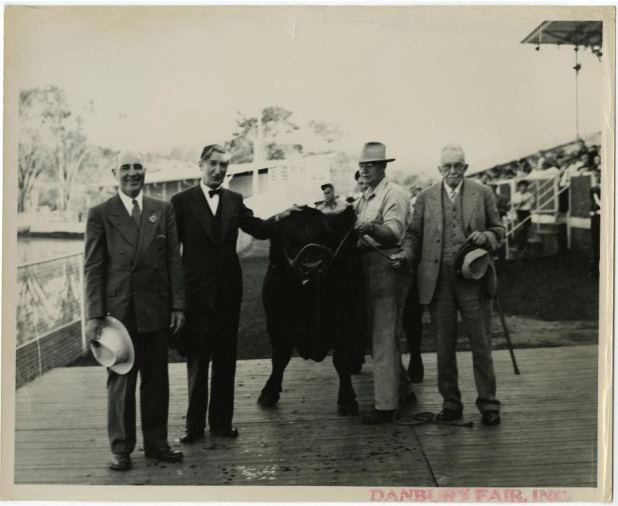By Nancy Finlay
Say the name “Wilbur Cross” to most people in Connecticut and they will immediately think of the highway running from Meriden to Milford. Few people now remember the man who led the state through the turbulent years of the 1930s.

Wilbur L. Cross, ca. 1933 – Connecticut State Library, State Archives, PG 500, Individual and Family Portrait Collection
Wilbur Lucius Cross was born in Mansfield on April 10, 1862. He received his BA from Yale and for many years remained with that institution, as an instructor of English, dean of the graduate school, editor of the Yale Review, and provost of the university. He published several books, including The Development of the English Novel and The Works and Letters of Laurence Sterne. He retired from Yale in 1930 at the age of 68. Then, at a time in life when most men rest on their academic laurels, Cross accepted the Democratic nomination for governor of Connecticut. Though his opponents claimed that “the dear old gentleman down at Yale” had no qualifications for political office, he won the election, defeating the Republican candidate by a substantial margin.
Seeing Connecticut Through the Great Depression
The stock market crashed the year before, and Connecticut, along with the rest of the nation, slipped into the Great Depression. Labor unrest proved widespread. The election of Democrat Franklin D. Roosevelt as president in 1932 resulted in a series of efforts, including the National Recovery Act (NRA), the Civilian Conservation Corps (CCC), and the Works Progress Administration (WPA), intended to combat the financial crisis and help people get back to work.
The responsibility for implementing these programs at the state level fell to Governor Cross. He showed strong leadership in confronting hunger marchers and strikers and facilitating the resolution of labor disputes. He supported the construction of the Merritt Parkway, the largest public works project in Connecticut to that time. He played a prominent role in the Connecticut Tercentenary (the celebration of the 300th anniversary of the founding of Hartford), encouraging citizens to take pride in their state and to find hope for the future.
The 1936 Flood Followed By The 1938 Hurricane
Two of the greatest natural disasters in the history of Connecticut occurred during the depths of the Great Depression. In March 1936, heavy rains melted deep snow, resulting in an unprecedented rise in the Connecticut River and its tributaries. Huge ice jams swept down from the north, and in the central valley, the floodwaters formed a vast, slow-moving sea. Much of Hartford found itself underwater, and electricity and telephone service remained out for days.

Flood of 1936: Cleanup on Front Street, Hartford, during the Flood of 1936 – Connecticut Historical Society
Then, in September 1938, Connecticut sustained a direct hit from a major hurricane, affecting virtually the entire state and causing extensive damage along the Long Island Sound due to high winds and coastal flooding. The Connecticut River flooded once again, inundating Hartford and other towns along its course. Downed trees and wires littered the streets.
During both disasters, Governor Cross worked with the federal government to bring aid to stricken areas. The National Guard patrolled the streets, WPA workers helped to restore damaged areas, CCC workers cleaned out and disinfected houses, and the Red Cross engaged unemployed workers in helping feed and house storm victims. In the wake of both disasters, Cross visited the afflicted towns, offering support and encouragement and assuring people that help was on the way. Cross served four terms as Connecticut’s governor, failing to win re-election in 1938 by a narrow margin due to the presence of a third-party candidate—a Socialist with strong support from labor.
On November 14, 1947, Cross cut a ribbon stretched across the highway near the North Haven–Wallingford line, opening the Hamden to Wallingford section of the northward continuation of the Merritt Parkway that bears his name. Well into his 80s, the former governor remained hale and hearty, full of plans for a new book. He died less than a year later, on October 5, 1948, following a short illness.
Nancy Finlay grew up in Manchester, Connecticut. She has a BA from Smith College and an MFA and PhD from Princeton University. From 1998 to 2015, she was Curator of Graphics at the Connecticut Historical Society.









